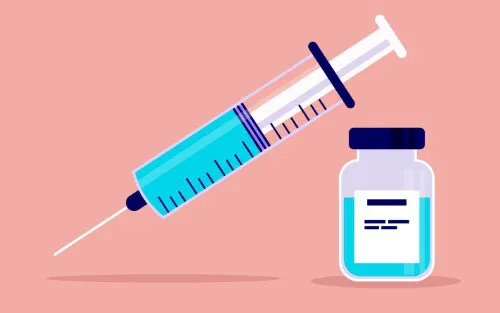Have you ever looked in the mirror and felt like your expression doesn’t quite match your mood? Perhaps your reflection hints at tiredness or tension, even when you're feeling upbeat and energised. For many women and professionals navigating their 30s and beyond, this disconnect is surprisingly common—and subtly frustrating.
That soft downturn at the corners of your mouth? It’s called a marionette line. These creases form as skin loses elasticity, collagen depletes, and facial volume begins to shift downwards. They might start as barely-there shadows—but over time, they deepen, casting a more serious or ‘sad’ look over your lower face.
What makes this more than a cosmetic concern is how emotionally charged it can be. Your face is your first impression, your everyday expression—and when it feels out of step with how you actually feel inside, confidence takes a hit. It’s not about chasing youth; it’s about reclaiming alignment between how you look and how you live.
That’s where dermal fillers offer a powerful, non-surgical solution. By restoring lost volume and gently lifting key areas of the face, they help soften marionette lines and reintroduce vitality—without compromising your natural expression. In this article, you’ll discover the causes behind marionette lines, how fillers work to treat them, what to expect from the procedure, and how to choose the right practitioner. Whether you’re new to tweakments or refining your existing plan, this guide offers insight that’s both practical and empowering.
Our Preferred Partner - Neauvia Hydro Deluxe
Neauvia Hydro Deluxe is a premium skin booster combining pure hyaluronic acid with amino acids Glycine and L-Proline, plus Calcium Hydroxyapatite, to deliver deep hydration, improved firmness, and subtle collagen stimulation. Its smooth consistency integrates naturally into the skin, enhancing texture and radiance with results that can last up to nine months and minimal downtime
Introduction
In pursuing timeless beauty and a youthful appearance, dermal fillers have become a cornerstone in cosmetic treatments. These injectable substances, designed to smooth wrinkles, restore volume, and enhance facial contours, have garnered widespread acclaim for their ability to offer immediate, noticeable improvements with minimal downtime. As we delve into the world of dermal fillers, it's crucial to understand the aesthetic benefits they promise and the science and substance behind these popular procedures.
This comprehensive guide aims to demystify dermal fillers, shedding light on the types available, the procedure itself, the benefits one can expect, and the potential risks involved. Whether you're considering dermal fillers for the first time or seeking to deepen your understanding of this cosmetic option, our guide is tailored to navigate the nuances of these treatments, ensuring you're well-informed and prepared to make decisions that align with your aesthetic goals and well-being.
Quick summary
- Dermal Fillers are injectable treatments designed to add volume, smooth wrinkles, and enhance facial contours. They offer an immediate improvement in appearance with minimal downtime.
- Types of Dermal Fillers: Includes Hyaluronic Acid (HA), Calcium Hydroxylapatite (CaHA), Poly-L-lactic Acid (PLLA), Polymethylmethacrylate (PMMA), and autologous fat injections, each with unique benefits and durations.
- Procedure: Involves an initial consultation, the injection process using a fine needle or cannula, and minimal post-procedure downtime, with most individuals able to resume their daily activities almost immediately.
- Benefits: Immediate and noticeable results, minimal recovery time, customisable treatment plans, longevity of results, and a non-surgical alternative to more invasive procedures.
- Potential Risks and Side Effects: While generally safe, possible side effects include swelling, bruising, redness, and, in rare cases, more severe complications. Choosing a qualified practitioner is crucial to minimise risks.
- Choosing the Right Practitioner: This is essential for ensuring safety and achieving desired outcomes. Considerations include qualifications, experience, and patient reviews.
- Dermal Fillers vs Botox: Fillers add volume and smooth static wrinkles, while Botox targets dynamic wrinkles by relaxing facial muscles.
- Cost Considerations: The cost varies depending on the type of filler, volume required, practitioner's experience, and geographical location. Most cosmetic dermal filler treatments are not covered by insurance.
What Are Dermal Fillers?
Dermal fillers, a term that encapsulates a variety of injectable treatments, are designed to fill in wrinkles, add volume to soft tissues, and enhance facial contours, contributing to a more youthful and rejuvenated appearance. At their core, these treatments involve injecting gel-like substances beneath the skin. The primary aim is to address signs of ageing that manifest as volume loss, lines, and wrinkles, particularly around the mouth, cheeks, and eyes.
The science behind dermal fillers is fascinating; they not only fill spaces where natural collagen and elastin have diminished but also stimulate the body's collagen production in some cases. This dual action provides immediate improvement in the appearance of lines and volume loss and may also have long-term benefits for skin texture and firmness.
Understanding the critical roles of dermal fillers in cosmetic enhancement is crucial. They are often utilised to:
- Smooth out lines around the nose and mouth (marionette lines, smile lines, and parentheses)
- Enhance and restore volume to sunken cheeks or temples
- Diminish vertical lip lines
- Plump and enhance the lips
- Smooth out a chin crease
- Improve symmetry among facial features
The decision to opt for dermal fillers is often motivated by the desire for a non-surgical solution that offers significant aesthetic improvement with minimal downtime. As we explore the vast array of filler options available, it becomes evident that this cosmetic strategy can be customised to meet diverse needs and preferences, making it a versatile choice for those looking to enhance their natural beauty.
Types of Dermal Fillers
In the realm of aesthetic enhancement, the variety of dermal fillers available allows for tailored treatments that align closely with individual needs and goals. Here’s a detailed look at the most widely used types:
Hyaluronic Acid (HA)
- Nature's Moisturiser: Hyaluronic acid, a substance found naturally in our skin, serves as a magnet for moisture, helping tissues stay hydrated and voluminous. Its ability to attract and retain water makes HA fillers a go-to choice for those seeking to diminish wrinkles and restore facial volume.
- Examples and Expectations: With brands like Juvederm, Restylane, and Belotero leading the market, HA fillers are celebrated for their immediate results and compatibility with the body. Typically, effects last from 6 to 18 months, with the added benefit of being reversible by applying an enzyme known as hyaluronidase.
Calcium Hydroxylapatite (CaHA)
- Bone-Inspired Rejuvenation: Derived from a mineral-like compound found in bones, CaHA fillers, such as Radiesse, offer a thicker consistency, making them ideal for deeper lines and areas requiring substantial volume enhancement.
- Dual Action: Beyond mere filling, CaHA stimulates the body's collagen production, blending immediate cosmetic improvement with long-term skin benefits. Thanks to its collagen-boosting properties, results can persist for a year or more.
Poly-L-lactic Acid (PLLA)
- The Collagen Stimulator: PLLA is a synthetic, biodegradable substance that stimulates collagen production rather than just filling in spaces. Sculptra Aesthetic represents this category, promising gradual, natural-looking results.
- Long-Term Enhancement: As the body slowly absorbs the PLLA, the stimulated collagen helps improve skin texture and volume over time, with effects that can last more than two years.
Polymethylmethacrylate (PMMA)
- Permanent Support: PMMA fillers, such as Bellafill, are synthetic, biocompatible substances that provide a permanent solution to wrinkles and volume loss. The microspheres in PMMA fillers remain beneath the skin indefinitely, offering ongoing support.
- Considerations: Given its permanent nature, choosing PMMA requires careful consideration and discussing expectations and potential outcomes with your practitioner.
Autologous fat injections (facial fat grafting)
- Your Body's Filler: This technique involves transferring fat from one part of your body to the face, offering a natural alternative to synthetic fillers. It’s the only method that requires surgery but leverages your body's natural resources.
- Natural and Long-Lasting: Results are semi-permanent, though the process may require touch-ups. The natural integration of your fat can provide a more lasting solution, with the added benefit of reducing fat in another area of your body.
This section provides a comprehensive overview of the main types of dermal fillers, each with unique benefits and considerations. The choice of filler depends on individual aesthetic goals, the area of treatment, and the desired longevity of results. A consultation with a skilled practitioner is essential to determine the most suitable type of filler for your needs.
The Procedure: What to Expect
Embarking on a journey with dermal fillers begins long before the actual injection and continues through to the care that follows. Understanding the procedure from start to finish can help set realistic expectations and prepare you for a smooth experience. Here's what you can anticipate:
Initial Consultation
This first step is your opportunity to discuss your aesthetic goals, review your medical history, and express any concerns. It's a dialogue that ensures you and your practitioner are aligned regarding expectations and outcomes. Key activities during this phase include:
- Discuss the areas you wish to enhance or rejuvenate.
- Going over your medical history to ensure there are no contraindications.
- Creating a tailored treatment plan that addresses your specific needs.
The Injection Process
The actual procedure is typically quick, often completed within an hour, and involves the following steps:
- Preparation: The targeted areas on your face will be cleaned, and a topical anaesthetic may be applied to minimise discomfort.
- Injection: The chosen filler is carefully injected into the specified areas using a fine needle or cannula. The technique varies depending on the type of filler and the treatment area, but precision and comfort are always priorities.
- Immediate Aftercare: After injections, your practitioner may gently massage the treated areas to ensure even filler distribution.
Post-procedure Care and Recovery
One of the appealing aspects of dermal fillers is the minimal downtime required. However, to ensure the best possible results and minimise the risk of complications, there are a few guidelines to follow post-procedure:
- Avoiding Strenuous Activities: It's generally recommended to avoid heavy exercise and activities that increase blood flow to the face for the first 24-48 hours.
- Ice Packs: Applying ice or a cold pack can help reduce swelling and bruising.
- Touching and Massaging: Avoid manipulating or massaging the treated areas unless directed by your practitioner, as this can affect the outcome.
The immediate aftermath may include swelling, redness, and bruising at the injection sites, which typically resolves within a few days to a week. Results can be seen almost immediately, but the final effect becomes more apparent as swelling subsides.
Follow-Up
A follow-up appointment may be scheduled to assess the results and determine if additional adjustments are necessary. This is also an opportunity to discuss any concerns or questions you may have post-treatment.
Embarking on dermal filler treatments is a collaborative process that requires clear communication and trust between you and your practitioner. By understanding what to expect and following the recommended care guidelines, you can ensure a positive experience and enjoy the rejuvenating effects of your treatment.
Benefits of Dermal Fillers
Dermal fillers have surged in popularity, not just for their aesthetic benefits but also for their practical advantages over other cosmetic procedures. Here's a deeper look into why so many choose dermal fillers as their go-to cosmetic enhancement:
Immediate and Noticeable Results
- One of the most compelling reasons for choosing dermal fillers is the instant gratification they provide. Unlike some treatments that require patience to see outcomes, fillers offer an immediate improvement in the appearance of treated areas. The enhancement of volume and reduction of wrinkles can be appreciated almost as soon as the procedure is completed, making it a quick solution for those seeking to improve their appearance for upcoming events or simply for personal satisfaction.
Minimal Recovery Time
- The convenience of minimal downtime cannot be overstated. After a dermal filler treatment, most individuals can return to their daily activities almost immediately. While there might be some swelling or bruising, these side effects are typically mild and resolve quickly, making dermal fillers an attractive option for those with busy lifestyles or who prefer a discreet cosmetic procedure.
Customisable Treatment Plans
- Dermal fillers are highly versatile, allowing treatments to be tailored to meet each individual's unique needs and aesthetic goals. Whether it's enhancing lip volume, smoothing out nasolabial folds, or restoring cheek volume, the flexibility of filler treatments means they can be adjusted in type, quantity, and technique to achieve the desired outcome.
Longevity of Results
- While not permanent, the effects of dermal fillers can last anywhere from 6 months to over two years, depending on the type of filler used, the area treated, and the individual's metabolism. This longevity offers a significant period during which the benefits of the treatment can be enjoyed before any touch-ups are necessary.
Non-Surgical Alternative
- For many, the appeal of dermal fillers lies in their non-surgical nature. They provide a way to address signs of ageing and enhance facial features without invasive surgery, associated risks, and lengthy recovery times. This makes fillers an accessible and less intimidating option for those seeking cosmetic improvements.
Dermal fillers are a transformative cosmetic option, offering immediate, customisable, and lasting results with minimal downtime. This blend of benefits explains their enduring popularity and the high satisfaction rates among those who choose them for facial rejuvenation and enhancement.
Potential Risks and Side Effects
While dermal fillers are generally considered safe, especially when administered by experienced practitioners, it's essential to be aware of potential risks and side effects. Being informed enables you to make a well-considered decision and take necessary precautions. Here’s a rundown of what to be mindful of:
Common Side Effects
- Swelling and Bruising: The most common reactions are swelling and bruising at the injection sites. These are usually mild and resolve within a few days to a week.
- Redness and Tenderness: Some people may experience redness and tenderness in the treated areas, which typically subsides within a few hours or days.
Rare Complications
- Infection: Though rare, there's a risk of infection at the injection site. Following post-care instructions diligently can mitigate this risk.
- Allergic Reactions: Some individuals may have allergies to the components of the filler. Discussing your medical history with your practitioner can help avoid this.
- Vascular Complications: Very rarely, fillers can accidentally be injected into blood vessels, leading to blockage. This can cause skin necrosis or more severe systemic effects. To minimise this risk, it's crucial to choose a highly skilled and knowledgeable practitioner.
Tips to Mitigate Risks
- Selecting the Right Practitioner: Ensure your practitioner is qualified, experienced, and has a good track record with dermal fillers. They should also have a thorough understanding of facial anatomy.
- Open Communication: During the consultation, discuss any medical conditions or allergies with your practitioner. Be transparent about any medications or supplements you're taking, as some can increase the risk of bruising.
- Follow Aftercare Instructions: Adhering to your practitioner's aftercare guidelines can significantly reduce the likelihood of complications.
Managing Expectations
It’s also crucial to have realistic expectations and understand that while dermal fillers can offer remarkable improvements, they may not achieve perfection. Discussing your goals and potential outcomes with your practitioner can help align your expectations with achievable results.
In conclusion, while dermal fillers have various benefits, knowing and understanding the potential risks and side effects is critical to a successful outcome. With the proper preparation and care, most people enjoy the rejuvenating effects of dermal fillers without experiencing significant complications.
Choosing the Right Practitioner
The success of dermal filler treatments relies heavily on the expertise and experience of the practitioner. Making an informed choice about who will perform your treatment is crucial for ensuring safety, achieving desired outcomes, and minimising risks. Here are key considerations and steps to take when selecting a practitioner:
Qualifications and Experience
- Medical Background: Opt for a practitioner with a solid medical background, ideally in dermatology or plastic surgery, who understands facial anatomy and the complexities of dermal filler treatments.
- Certification: Ensure they are certified to perform cosmetic procedures and have specific training in administering dermal fillers.
- Experience: Experience matters. Inquire about the number of filler procedures the practitioner has performed and ask to see before-and-after photos of their work.
Consultation Process
- A thorough initial consultation is a good indicator of a practitioner's diligence and care. They should:
-
- Assess your facial structure skin condition, and discuss your aesthetic goals.
- Explain the options available, including types of fillers and their benefits and risks.
- Address any questions or concerns, providing clear, honest answers.
Reviews and Recommendations
- Patient Reviews: Look for reviews from previous patients. Websites, forums, and social media can be valuable resources for gauging patient satisfaction and experiences.
- Personal Recommendations: Recommendations from friends or family who have had positive filler experiences can also guide you towards reputable practitioners.
Safety Standards and Emergency Preparedness
- Ensure the clinic follows stringent safety and hygiene protocols. The practitioner should also be prepared to manage complications, indicating a commitment to patient safety.
Comfort Level
- You should feel comfortable and confident in your practitioner's ability. Trust your instincts; consider looking elsewhere if something feels wrong during the consultation.
Aftercare Support
- Good practitioners provide comprehensive aftercare instructions and are available to address any post-treatment concerns. Ensure your practitioner offers follow-up support as part of their service.
Choosing the right practitioner is a pivotal step in your dermal filler journey. It's about finding a balance between expertise, experience, and a personal connection. A qualified and compassionate practitioner will ensure the procedure is performed safely and work with you to achieve the best possible outcomes, tailoring the treatment to suit your unique features and goals.
Dermal Fillers vs Botox: Understanding the Difference
Dermal fillers and Botox are two of the most popular non-surgical cosmetic enhancement options. Though sometimes mentioned in the same breath, their uses, mechanisms of action, and outcomes differ significantly. Understanding these differences is key to determining which treatment best aligns with your aesthetic goals.
Mechanism of Action
- Dermal Fillers: As their name suggests, fillers "fill" wrinkles, lines, and hollow areas in the face, adding volume and smoothing the skin. They physically add substance beneath the skin to lift and plump the targeted areas.
- Botox (Botulinum Toxin): Botox, on the other hand, is a neuromodulator that temporarily paralyses the muscles responsible for creating dynamic wrinkles (those that appear with facial expressions). It does not fill wrinkles but relaxes the muscles, preventing them from contracting and deepening lines and creases.
Areas of Application
- Dermal Fillers are primarily used to add volume and smooth out static wrinkles (those visible without facial movement) around the mouth, nose, cheeks, and jawline. Fillers are also popular for lip augmentation and reshaping facial contours.
- Botox is best suited for treating dynamic wrinkles, such as crow's feet, forehead lines, and frown lines between the eyebrows. It's not used for adding volume but is effective in creating a smoother, more rested appearance by relaxing facial muscles.
Duration of Results
- Dermal Fillers: The longevity of filler results varies depending on the type of filler used, the area treated, and individual factors like metabolism. Generally, results can last from 6 months to over two years.
- Botox: The effects of Botox are temporary, with results typically lasting between 3 to 6 months. Regular maintenance sessions are required to maintain the desired effect.
Decision-Making
Choosing between dermal fillers and Botox—or combining both—depends on the specific issues you wish to address. For instance, fillers may be the preferred option if your primary concern is loss of volume or deep static wrinkles. Botox might be more appropriate if you're looking to soften the appearance of dynamic wrinkles caused by facial expressions.
Many practitioners use a combination of Botox and fillers to achieve a comprehensive facial rejuvenation effect, addressing static and dynamic wrinkles while restoring facial volume.
In conclusion, dermal fillers and Botox offer practical facial enhancement and anti-ageing solutions, but their applications and outcomes are distinct. A thorough consultation with a skilled practitioner can help determine the most suitable approach for achieving your aesthetic objectives, whether it involves dermal fillers, Botox, or a strategic combination.
Cost Considerations
When contemplating dermal filler treatments, understanding the financial implications is as crucial as knowing the aesthetic outcomes. The cost of dermal fillers can vary widely depending on several factors, making it necessary for potential patients to have a clear picture of what to expect financially.
Factors Influencing the Price
- Type of Filler: Different fillers come with different price tags. For instance, newer, longer-lasting fillers may cost more than those with shorter durations.
- Amount of Filler Needed: The volume of filler required to achieve desired results can significantly impact the overall cost. More extensive treatments requiring multiple syringes will naturally be more expensive.
- Practitioner's Experience: The practitioner's or clinic's expertise and reputation can influence the cost. Highly qualified and well-regarded professionals often charge more for their services, reflecting their experience and the demand for their expertise.
- Geographical Location: Prices can vary by region, with treatments typically costing more in major cities and metropolitan areas due to higher operational costs.
Average Costs and Price Range
While it's challenging to provide specific prices due to the variables mentioned, patients can expect the cost of a single syringe of filler to range from several hundred to over a thousand pounds or dollars. It's advisable to discuss pricing in detail during your consultation to get a precise estimate based on your treatment plan.
Insurance and Financing Options
- Insurance: Cosmetic dermal filler treatments are generally not covered by health insurance, as they are considered elective procedures. However, it's always worth checking with your provider if there are exceptions.
- Financing and Payment Plans: Many clinics offer financing options or payment plans to make treatments more accessible. These can help spread the cost over time, making it easier to budget for your procedure.
Evaluating the Investment
Investing in dermal fillers goes beyond mere vanity; it enhances self-confidence and well-being for many. When considering the cost, it's also helpful to weigh the value of the expected results against the financial outlay. Quality and safety should never be compromised for the sake of saving money. Choosing a qualified practitioner and quality products ensures a positive and safe outcome.
Consultation is Key
A detailed consultation with your chosen practitioner will provide a tailored estimate considering your specific goals and needs. This step is essential for setting realistic expectations regarding the financial aspect of your treatment plan.
In summary, while the cost of dermal fillers can be significant, understanding the factors that influence pricing and exploring available payment options can help manage the investment in your appearance and self-confidence. With careful planning and consultation, dermal filler treatments can be a valuable and satisfying part of your personal care regimen.
Real-Life Experiences: Before and After
One of the most compelling ways to understand the impact of dermal fillers is through the lens of real-life experiences. Before-and-after photos provide visual evidence of the transformations possible and offer insights into the emotional and psychological benefits accompanying aesthetic improvements.
Conclusion
Dermal fillers stand as a testament to the advancements in non-surgical cosmetic procedures, allowing individuals to enhance their natural beauty, restore youthful volume, and smooth out the signs of ageing with minimal downtime. From defining what dermal fillers are to exploring the types available, the procedure, benefits, potential risks, and the importance of choosing the right practitioner, this comprehensive guide has traversed the spectrum of considerations associated with these popular treatments.
The journey through real-life experiences and frequently asked questions underscores the transformative potential of dermal fillers in terms of aesthetic enhancement and boosting self-confidence and overall well-being. However, as with any cosmetic procedure, the decision to proceed with dermal fillers should be made with a clear understanding of the expected outcomes, the longevity of results, and the possible risks involved.
Choosing a qualified, experienced practitioner and having an open, honest dialogue about your goals and expectations are paramount. This ensures that the treatment plan is tailored to your unique needs, maximising the benefits while minimising the risks.
When administered correctly, dermal fillers can be a safe and effective way to achieve a rejuvenated appearance. Whether you want to add volume to your cheeks, smooth out wrinkles, or enhance your lips, dermal fillers offer a versatile solution to address various aesthetic concerns. With the right approach, they can be a valuable part of your self-care and beauty regimen, helping you look and feel your best.
As we conclude this guide, remember that the journey to enhanced beauty through dermal fillers is as much about the physical transformation as it is about the personal satisfaction and confidence of embracing your desired appearance. If you're considering dermal fillers, take this knowledge forward, and may your journey be informed and transformative.
Your Dermal Fillers Questions
Real Questions from Real People — Answered
Straightforward answers to the questions people like you are asking right now about Dermal Fillers.

Radiesse.
Hi, I’m looking for radiesse. Can I have prices ? Thanks
chin treatment with dermal fillers
I am really self conscious of my bum chin
To view all the Dermal Fillers questions, please click here.
Or click here to ask your own question.
Find A Verified Clinic
Trusted Dermal Fillers Experts, Local to You
Easily connect with qualified, verified professionals for safe, reliable treatment.


Hoole Medispa
51 Hoole Road, Hoole, Chester, CH2 3NH
Welcome to Hoole Spa and Aesthetics situated in the beautiful Grade II listed building in the suburbs of Hoole, Chester.

Aurora Aesthetic Solutions
2 York Road, Strensall, York, YO32 5XT
At Aurora Skin Health Solutions, we believe healthy, radiant skin is the key to confidence and well-being. Our expert team offers a range of cutting-edge treatments.
To find a Dermal Fillers clinic near you, please click here.

